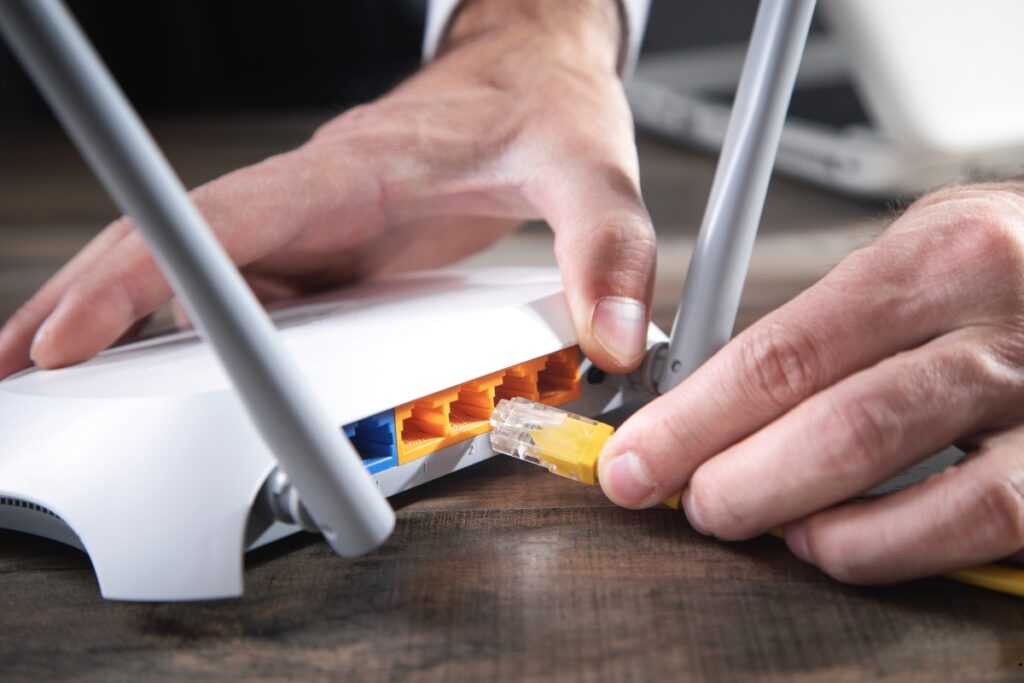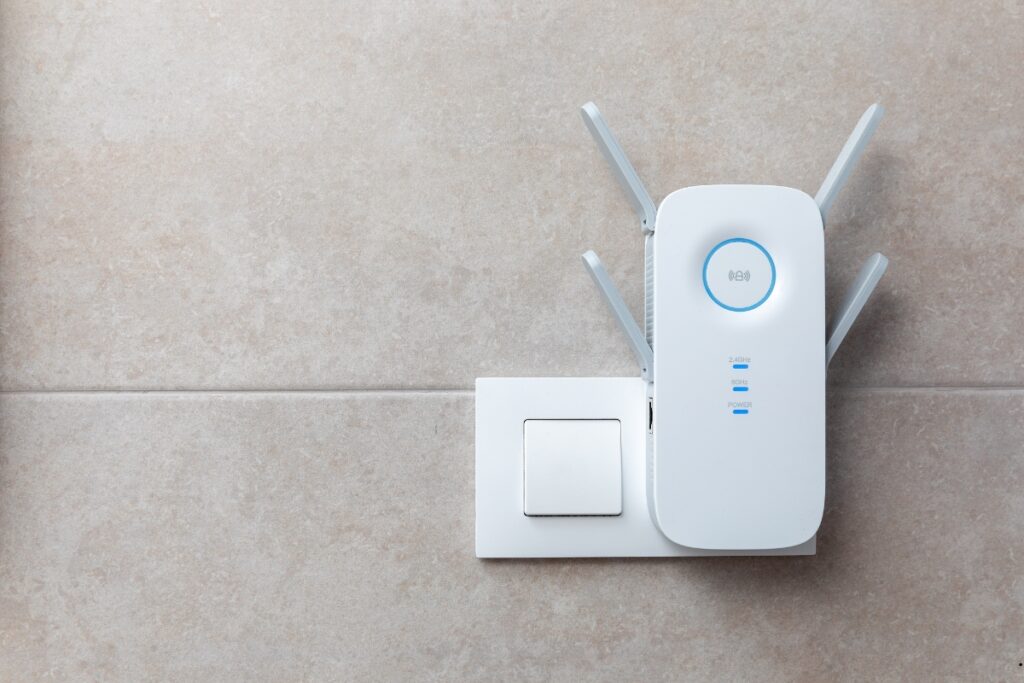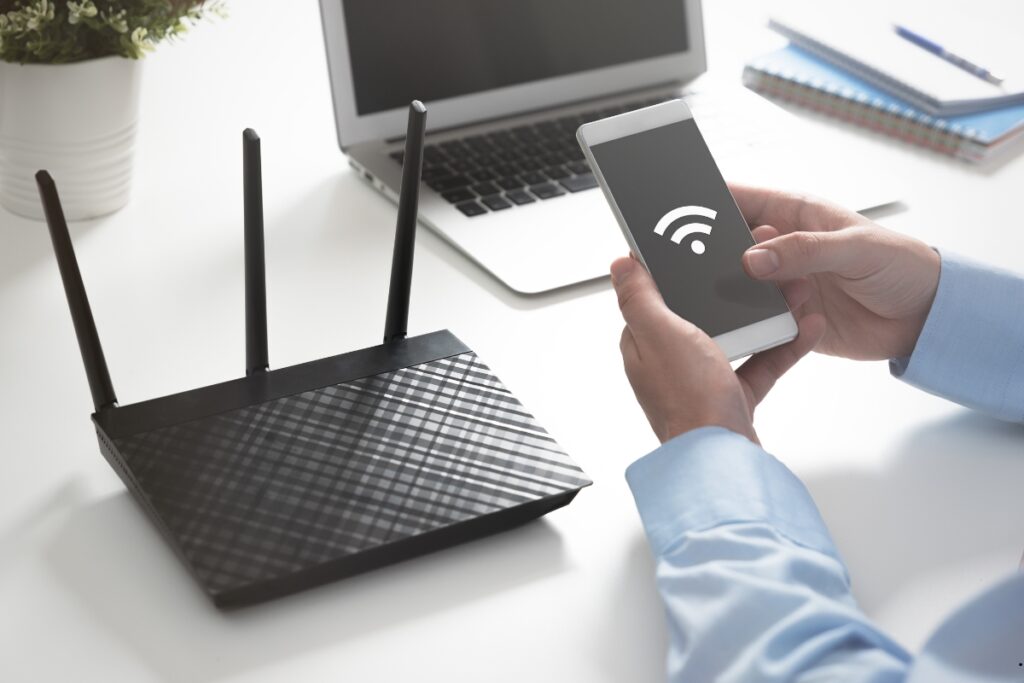Internet connection failure can be disastrous for any business, resulting in slow operations, loss of revenue, and customer complaints. Internet downtime can cost a lot, in some cases up to $6,600 per minute. A few minutes of Wi-Fi or Internet connectivity issues can have a significant impact on your company’s performance. To avoid these consequences, you must know the right way to solve the problem.
Important Advice from MZ Tech’s IT Support Analyst:
“Check other devices to see if the problem is limited to one device or affecting multiple devices. If other devices are also unable to connect, the problem may be with your Internet Service Provider (ISP) or network equipment. I might. Contact your ISP to see if there is a problem in your area. Practice shooting methods do it”
MZ Tech
Can’t connect to the internet? Try these 15 solutions
Check for physical connectivity issues

Sometimes, your internet connection can be disrupted due to minor issues, such as a loose cable, or an unplugged modem/router.
• Wireless network: Check that Wi-Fi is turned on on your device. For Apple devices:
Settings > Network
• Wired connection: Check the Ethernet cable. If the cable seems damaged, try a new cable.
Restart the router and modem
• Unplug the router and modem, wait 30 seconds, then turn on the modem.
• After 60 seconds turn on the router and check again.
Diagnose software problems
Antivirus or firewall settings may block the connection. Check the problem by temporarily turning off the firewall.

Check the Wi-Fi signal range
If the signal is weak, use a Wi-Fi extender or move the device closer.

Confirm blocking from ISP
If your account is suspended, contact your ISP.
Use Windows Network Diagnostics
Settings > Network
Check the Wi-Fi adapter
Go to Device Manager and look at the network adapter settings.
Reset Internet Explorer settings
Restore Internet Explorer’s default settings.
Reset network settings
Use the Network reset option in Windows.

Restart File/Windows Explorer
Go to Task Manager and restart File Explorer.
Check Windows Services
Go to Task Manager > Services > DHCP Client and set the status to “Running”.
Forget Wi-Fi networks
Settings > Network & Internet > Wi-Fi > Manage known networks Forget and reconnect.
Restart the computer
Restarting the computer several times resolves the issue.
Contact your ISP
If the problem persists, consult your Internet service provider.
Consult IT professionals
If the problem is not resolved after all these steps, seek help from expert IT team.
Troubleshooting wireless network connection problems in 10 steps
When problems occur in a wireless network, various situations can arise. However, information provided by users can help network administrators get to the root of problems.

The nature of wireless network problems
Wireless networking has become a part of everyday life and is increasing in complexity. For users, the network is an invisible resource to which they connect, while for network administrators, it is a complex system consisting of many components.
When wireless connection problems occur, the response of users and administrators depends on a variety of factors. Below are 10 key steps to solving these problems:
Step 1: Check the basics
Most of the time problems are rooted in basic mistakes. Check the following:
• Make sure the wireless network adapter is turned on.
• Check that the device is not in airplane mode.
• Do not configure a static IP address.
• Make sure to connect to the correct network.
• Permissions may be required for network access.
Step 2: Understand the nature of the problem
Often wireless problems are related to a single device or user. To understand the scope of the problem:
• Compare your situation with other users.
• Find out if the problem is limited to one device or affecting more devices.
Step 3: Do a basic assessment
The devices provide signal bars and other information. Check them out:
• Look at the strength of the signal bars.
• Poor signal can also be caused by poor performance of the device.
• Do a ping test but be careful as it doesn’t always reveal the problem.
Step 4: Provide accurate information
If reporting a problem, provide the following information:
• Place, time and date of issue. • A description of the problem such as network visibility or not connecting.
Step 5: Troubleshoot the device
Sometimes the problem is with the device rather than the network:
• Update wireless adapter drivers.
• Correct the date and time.
• Obtain configuration instructions from the network administrator.
Step 6: Understand the network’s weak points
The following problems may occur in the network infrastructure:
• Connection may be affected due to wireless AP corruption.
• Network performance may suffer in the presence of high users.
Step 7: Identify specific problems
If an application or website cannot be accessed, describe the problem:
• See if the problem is with the network or a specific protocol.
Step 8: Eliminate software errors
Software flaws in wireless networking systems can also cause problems:
• Sudden reboot of the AP or non-functioning of certain features.
Step 9: Maintain the network
To understand network complexities:
• Train staff from time to time.
• Maintain accurate network documentation and labeling.
Step 10: Understand the difference between home and office networks
Home devices generally do not work well in business networks:
• Some devices do not support advanced security protocols.
• Devices requiring lower data rates may cause problems.
Best practice
To troubleshoot network issues:
• Users must provide accurate information.
• Collaborate with help desk and administrators.
This guide will help you troubleshoot wireless networking issues.










